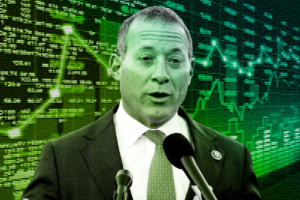Rx Painkiller Deaths Rising Faster in Women Than Men
The rate of women dying from overdoses on prescription painkillers has increased one and a half times the rise for men -- a 415 percent change among females between 1999 and 2010, compared with 265 percent among males -- U.S. government researchers say.
The rate of women dying from overdoses on prescription painkillers has increased one and a half times the rise seen in men — a 415 percent change among females between 1999 and 2010, compared with 265 percent among males — U.S. government researchers said in a Vital Signs article in Morbidity & Mortality Weekly Report.
A total of 48,000 women died of such overdoses during those years. Roughly 6,600 of the deaths occurred in 2010 alone.
“Prescription painkiller drug deaths have skyrocketed in women,” Dr. Thomas Frieden, director of the Centers for Disease Control and Prevention, told reporters during a news briefing Tuesday, according to MedPage Today. “It’s not only deaths, but there is also a great increase in the number of emergency department visits for misuse and abuse … of opioid painkillers.”
Visits to the emergency room for prescription drug problems more than doubled among women from 2004 to 2010, the study showed. Rates were highest among women ages 25 to 34, reaching nearly 50,000 such visits for opioid painkillers in 2010.
Frieden says the increases in deaths and emergency room visits have occurred in lockstep with the rise in painkiller prescriptions. The number of such prescriptions has climbed “to an extent that we could not have anticipated,” he said.
Of 15,323 female deaths attributed to drug overdose in 2010, 6,631 — 71 percent — involved prescription opioids, up from 1,286 in 1999.
— Posted by Alexander Reed Kelly.
Your support matters…MedPage Today:
Frieden said the increase could have something to do with the fact that women are more likely to have chronic pain than men, and are more likely to be prescribed prescription opioid painkillers for their condition.
Also, he said, women often receive greater doses of these drugs than men, even though women are more likely to have adverse events from higher doses than men.
“We don’t understand why [women] are getting higher doses, when on average they should be getting lower doses” than men, Frieden said during the briefing.
And contrary to expectations, he added, the increases in death rates were greatest among women ages 45 to 54, at 21.8 per 100,000 population.
Independent journalism is under threat and overshadowed by heavily funded mainstream media.
You can help level the playing field. Become a member.
Your tax-deductible contribution keeps us digging beneath the headlines to give you thought-provoking, investigative reporting and analysis that unearths what's really happening- without compromise.
Give today to support our courageous, independent journalists.






You need to be a supporter to comment.
There are currently no responses to this article.
Be the first to respond.